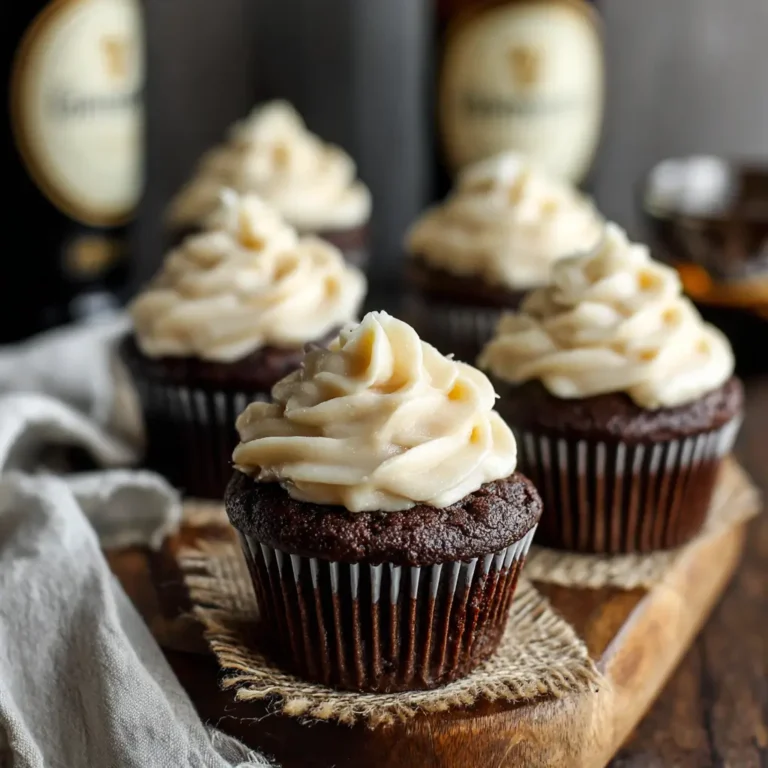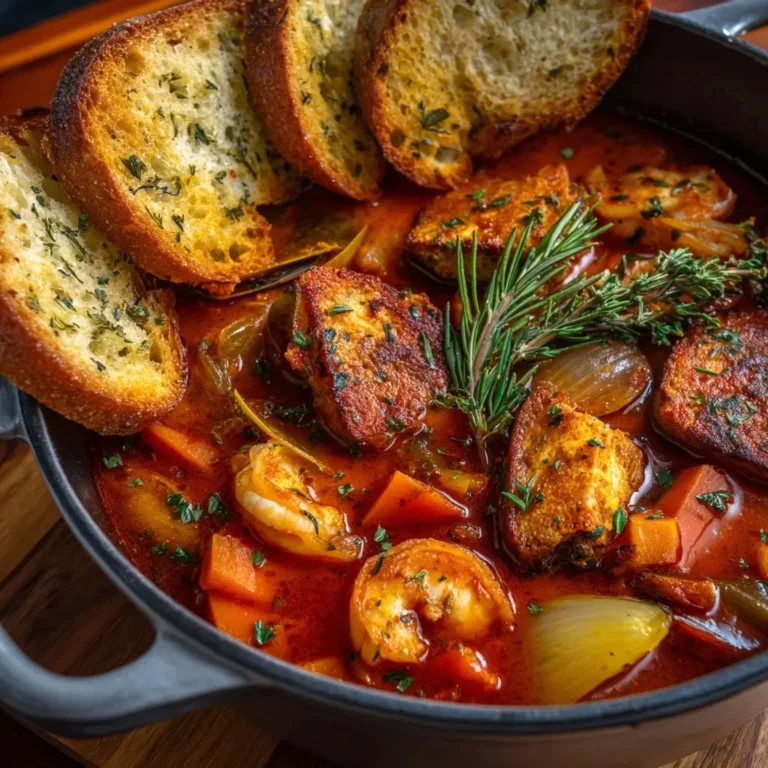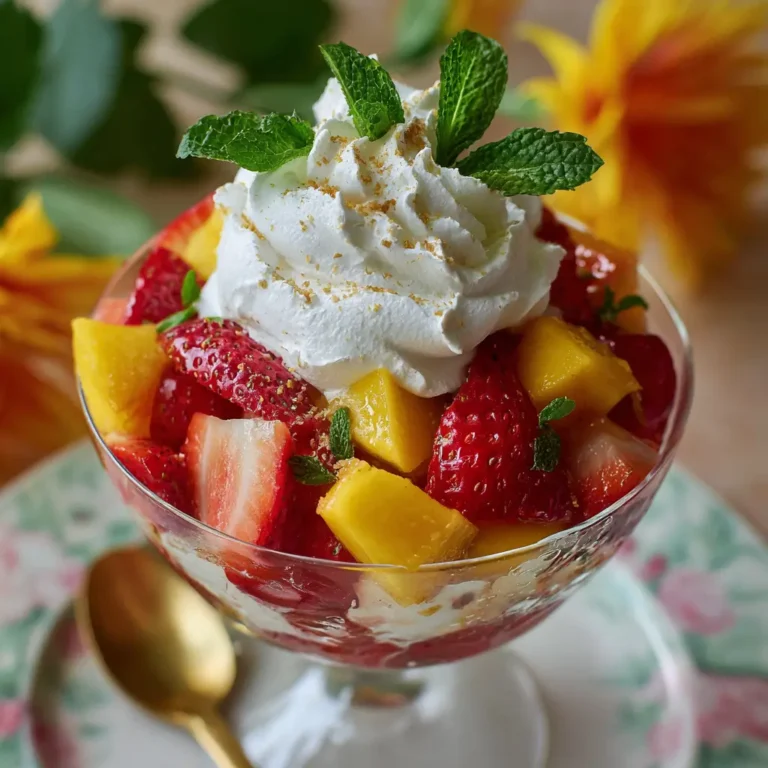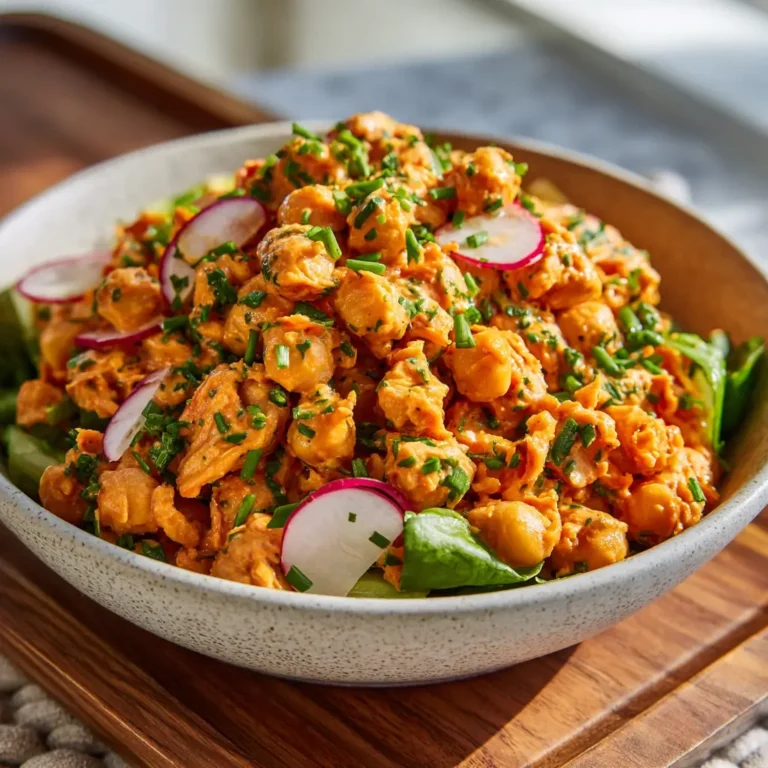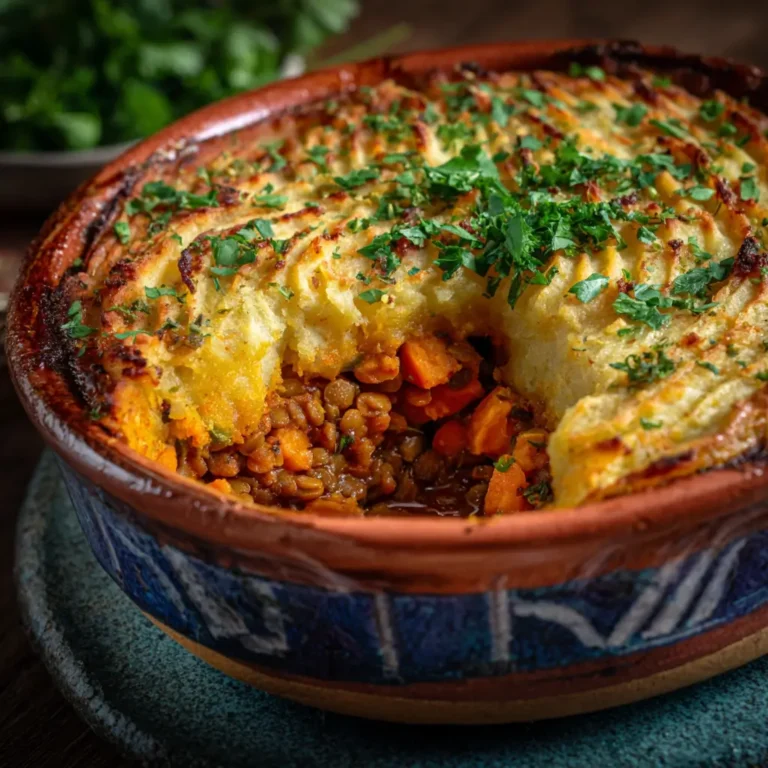Chicken Paella (no chorizo)
Chicken Paella (No Chorizo): A Flavorful Spanish Delight
Introduction
Chicken Paella is a vibrant, aromatic dish that captures the essence of Spanish cuisine with its golden saffron-infused rice, tender chicken, and a medley of fresh vegetables. Originating from the coastal regions of Valencia, paella has evolved into a beloved international favorite, celebrated for its bold flavors and communal spirit. This version, crafted without chorizo, focuses on the natural richness of chicken and seasonal produce, making it perfect for those who prefer a lighter yet deeply satisfying meal. Whether you’re hosting a dinner party or enjoying a cozy family night, this Chicken Paella recipe delivers both visual appeal and culinary excellence.
The History
Paella traces its roots to the Valencia region of eastern Spain, where farmers and laborers traditionally cooked meals over open fires in large, shallow pans known as “paelleras.” The original Valencian paella was made with locally available ingredients such as rabbit, chicken, snails, green beans, tomatoes, and flat rice, seasoned simply with saffron and rosemary. Over time, the dish gained popularity across Spain and beyond, adapting to regional tastes and ingredient availability. While seafood paella became common along the coast and mixed paellas emerged in urban centers, the use of chorizo—common in some modern versions—was not part of the traditional recipe. In fact, many purists argue that authentic paella should never include chorizo, which is more typical of other Spanish dishes like fabada asturiana. Our no-chorizo approach honors these traditional values while highlighting the nuanced flavor of chicken and saffron.
Ingredients Breakdown
The beauty of Chicken Paella lies in its balance of simple, high-quality ingredients working together harmoniously:
- Chicken: Bone-in, skin-on thighs and drumsticks are ideal—they stay moist during cooking and impart deep flavor to the rice.
- Short-Grain Rice: Bomba or Calasparra rice is preferred due to its ability to absorb liquid without becoming mushy. Arborio can be used in a pinch, though it may yield a creamier texture.
- Saffron: This precious spice gives paella its signature golden hue and subtle earthy aroma. It’s best soaked in warm broth before adding.
- Tomatoes: Ripe plum tomatoes, peeled and grated, form the base of the sofrito, lending sweetness and acidity.
- Bell Peppers: Red and yellow peppers add color and mild sweetness, enhancing the dish’s vibrancy.
- Green Beans: Fresh or frozen, they provide a pleasant crunch and freshness.
- Garlic and Onion: Essential aromatics that build depth in the sofrito layer.
- Paprika (Smoked and Sweet): Adds warmth and complexity without overpowering the dish.
- Chicken Broth: Homemade is best, but good-quality store-bought works well. It carries the saffron and seasonings throughout the rice.
- Olive Oil: Extra virgin olive oil is used generously—it’s central to authentic Spanish cooking.
- Lemon Wedges: Served on the side for a bright finish that cuts through the richness.
- Peas: Optional, but commonly added for color and sweetness.
- Bay Leaf: Imparts a subtle herbal note during simmering.
Notably absent is chorizo, allowing the true character of the chicken and vegetables to shine.
Step-by-Step Recipe
- Prepare Ingredients: Cut chicken into portions if needed and pat dry. Peel and finely chop onion. Mince garlic. Grate tomatoes and set aside. Slice bell peppers into thin strips. Trim green beans. Measure out rice and have broth warmed with saffron steeped in it.
- Heat the Paella Pan: Place a large, shallow paella pan or wide skillet over medium-high heat. Add 1/4 cup of olive oil and let it heat until shimmering.
- Sear the Chicken: Arrange chicken pieces skin-side down in the hot oil. Cook for 6–8 minutes until golden brown and crispy. Flip and cook another 4 minutes. Remove and set aside.
- Sauté Aromatics: In the same oil (now flavored with chicken drippings), add onions and cook until translucent (about 5 minutes). Add garlic and stir for 30 seconds until fragrant.
- Add Vegetables: Stir in bell peppers and green beans. Cook for 5–6 minutes until slightly softened.
- Create the Sofrito: Add the grated tomatoes, stirring frequently. Cook for 8–10 minutes until the mixture thickens and the oil begins to separate slightly from the solids—a sign of a well-developed sofrito.
- Season and Toast Rice: Stir in 1 teaspoon sweet paprika and 1/2 teaspoon smoked paprika. Immediately add 2 cups of rice and stir constantly for 1–2 minutes to coat each grain with oil and toast lightly.
- Add Liquid: Pour in the warm saffron-infused broth (approximately 4–5 cups, depending on rice type). Stir once gently to distribute rice evenly, then stop stirring—this helps develop the coveted “socarrat” (crispy bottom layer).
- Return Chicken: Nestle the seared chicken pieces into the rice, skin-side up. Add a bay leaf.
- Simmer: Reduce heat to low and cook uncovered for 20–25 minutes. Do not stir. Rotate the pan occasionally for even cooking. The rice should absorb the liquid gradually, becoming tender with a slight bite.
- Add Peas (Optional): If using, scatter peas over the top in the last 5 minutes of cooking.
- Rest: Remove from heat, cover loosely with foil, and let rest for 5–10 minutes. This allows the rice to finish steaming and flavors to meld.
- Garnish and Serve: Discard bay leaf. Squeeze fresh lemon juice over the top and serve directly from the pan with lemon wedges on the side.
Tips
- Use the Right Rice: Bomba rice absorbs up to three times its volume in liquid without losing structure—key for fluffy, non-sticky paella.
- Don’t Overcrowd the Pan: Use a wide, shallow pan (minimum 14 inches) to ensure even heat distribution and proper evaporation.
- Avoid Stirring After Adding Broth: Stirring releases starch and makes the rice creamy, which is undesirable in paella.
- Control Heat Carefully: Too high, and the bottom burns; too low, and the rice won’t develop socarrat. Adjust flame as needed.
- Warm Broth is Crucial: Cold liquid shocks the rice and disrupts absorption. Keep broth warm in a saucepan throughout.
- Soak Saffron Properly: Crush a few threads and steep in 1/4 cup warm broth for at least 15 minutes to extract maximum color and flavor.
- Let It Rest: Resting after cooking ensures uniform moisture and prevents soggy or undercooked spots.
- Crispy Bottom Layer (Socarrat): In the final 2–3 minutes, increase heat slightly to create a caramelized crust. Listen for a light crackling sound and smell a nutty aroma.
Variations and Customizations
While this recipe stays true to Valencian roots, there are many ways to personalize your Chicken Paella:
- Seafood Addition: Replace half the chicken with shrimp, mussels, or clams for a “mixta” style. Add seafood in the last 8–10 minutes to avoid overcooking.
- Vegetarian Version: Omit chicken entirely and use mushrooms, artichokes, and extra green beans. Substitute vegetable broth and consider adding smoked paprika for depth.
- Dairy-Free & Gluten-Free: This recipe is naturally both, making it suitable for various dietary needs.
- Herb Variations: Try adding fresh rosemary with the bay leaf, or finish with chopped parsley or cilantro.
- Spicier Kick: Add a pinch of cayenne or diced jalapeño when sautéing peppers.
- Using Leftover Chicken: Shred cooked chicken and add during the last 5 minutes just to warm through.
- Rice Alternatives: For a lower-carb option, try cauliflower rice—but cook separately and mix in at the end, as it behaves very differently.
- Fusion Flair: Add diced mango or pomegranate seeds for a sweet contrast, or top with crumbled feta for a Mediterranean twist.
Health Considerations and Nutritional Value
Chicken Paella (without chorizo) offers a balanced nutritional profile rich in protein, complex carbohydrates, and healthy fats:
- Protein Source: Chicken provides lean protein essential for muscle repair and satiety.
- Heart-Healthy Fats: Olive oil contributes monounsaturated fats linked to improved cardiovascular health.
- Fiber-Rich Vegetables: Green beans, peppers, and tomatoes offer fiber, vitamins A and C, and antioxidants.
- Low Sodium Option: Use low-sodium broth and limit added salt to make this heart-friendly.
- Saffron Benefits: Contains crocin and safranal, compounds studied for anti-inflammatory and mood-enhancing properties.
- Portion Control: One serving (~1.5 cups) contains approximately 400–500 calories, depending on oil and portion size.
- Gluten-Free and Dairy-Free: Naturally free from common allergens, making it accessible to many diets.
- Watch the Oil: Traditional recipes use generous oil; reduce slightly for a lighter version, though authenticity may be compromised.
This dish supports balanced eating when paired with a fresh salad or steamed greens.
Ingredients
- 1.5 lbs (700g) bone-in, skin-on chicken thighs and drumsticks
- 1/4 cup extra virgin olive oil
- 1 medium onion, finely chopped
- 3 garlic cloves, minced
- 1 red bell pepper, sliced
- 1 yellow bell pepper, sliced
- 1 cup green beans, trimmed and cut into 1-inch pieces
- 2 ripe plum tomatoes, peeled and grated
- 2 cups (400g) Bomba or Calasparra rice
- 1 teaspoon sweet paprika
- 1/2 teaspoon smoked paprika
- Large pinch of saffron threads (about 30–40), crushed and soaked in 1/4 cup warm broth
- 4.5 to 5 cups warm chicken broth
- 1 bay leaf
- 1/2 cup frozen peas (optional)
- Salt to taste
- Lemon wedges, for serving
- Fresh parsley, chopped (for garnish)
Directions
- In a large paella pan or wide skillet, heat olive oil over medium-high heat. Sear chicken pieces, skin-side down, until golden brown (6–8 minutes). Flip and cook 4 more minutes. Remove and set aside.
- In the same oil, sauté onion until soft (5 minutes). Add garlic and cook 30 seconds.
- Stir in bell peppers and green beans; cook 6 minutes until tender-crisp.
- Add grated tomatoes and cook 8–10 minutes, stirring often, until mixture thickens and oil separates.
- Mix in paprikas, then add rice. Toast for 1–2 minutes, stirring constantly.
- Stir in saffron with its soaking liquid, then pour in warm broth. Gently shake pan to level rice. Do not stir again.
- Nestle chicken back into the rice. Add bay leaf.
- Simmer uncovered over low heat for 20–25 minutes, rotating pan occasionally, until rice is tender and liquid is absorbed.
- If using peas, add them in the last 5 minutes.
- For socarrat, increase heat slightly in the final 2–3 minutes until you hear a light crackle.
- Remove from heat, cover with foil, and rest 10 minutes.
- Discard bay leaf. Garnish with parsley and lemon wedges. Serve immediately.
FAQ
Can I make paella without a paella pan?
Yes! A wide, shallow skillet or Dutch oven works well. Avoid deep pots, as they trap steam and prevent proper evaporation.
Why shouldn’t I stir the rice after adding broth?
Stirring activates starch, leading to a risotto-like texture. Paella should be fluffy and distinct, not creamy.
What is socarrat and how do I achieve it?
Socarrat is the caramelized crust at the bottom of the pan. To get it, maintain steady heat and listen for a faint crackling sound near the end of cooking.
Can I use chicken breast instead of thighs?
You can, but breasts tend to dry out. If using, add them later in the process (last 10 minutes) to keep them juicy.
Is saffron really necessary?
While substitutes like turmeric can mimic color, saffron provides an irreplaceable floral aroma. It’s worth the investment for authenticity.
How do I store leftovers?
Cool completely and refrigerate in an airtight container for up to 3 days. Reheat gently in a skillet with a splash of broth to revive texture.
Can I freeze Chicken Paella?
Freezing is possible but may affect rice texture. Thaw overnight in the fridge and reheat slowly on the stove.
Why is my paella mushy?
Likely causes: over-stirring, too much liquid, or using the wrong rice. Stick to short-grain varieties and follow liquid ratios carefully.
Summary
Chicken Paella without chorizo celebrates the authentic flavors of Spain with tender chicken, saffron-kissed rice, and garden-fresh vegetables—all cooked to perfection in one pan. Rich in tradition and adaptable to modern tastes, this dish brings the warmth of Valencia to your table with every golden, savory bite.

